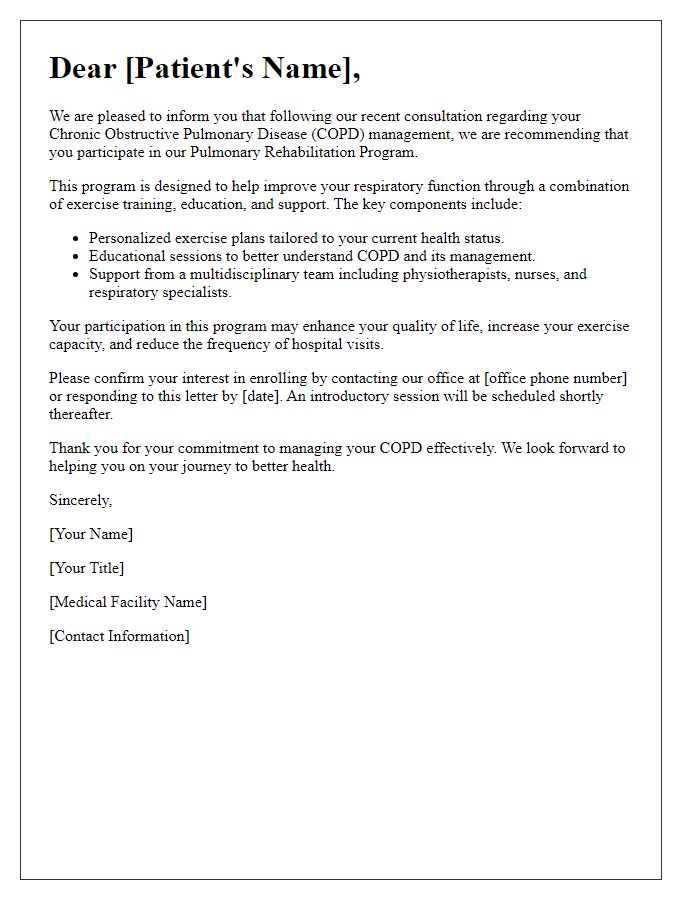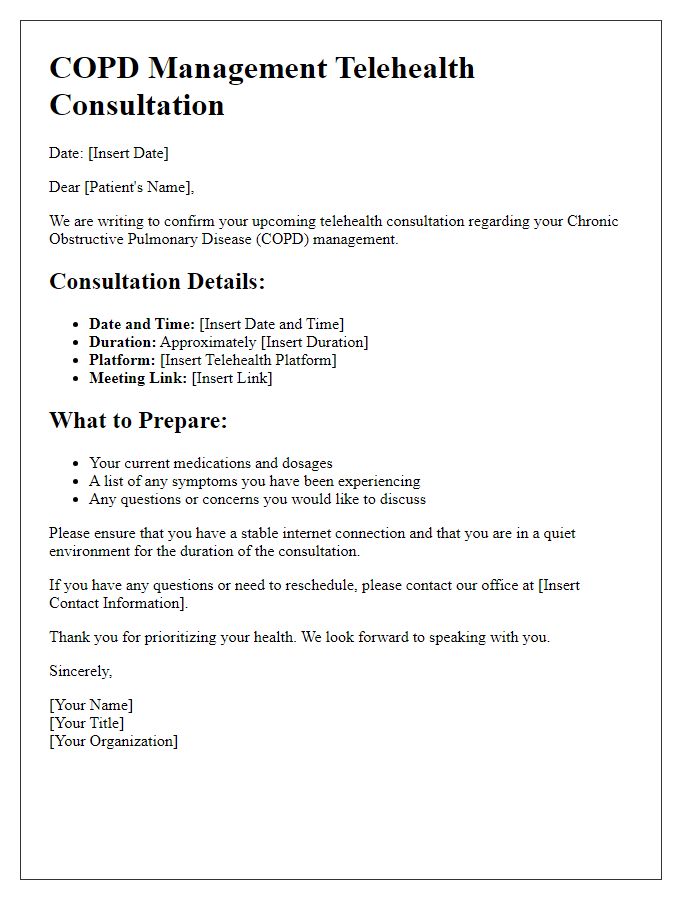Navigating the complexities of Chronic Obstructive Pulmonary Disease (COPD) can be a daunting task, but you're not alone on this journey. Effective management and support play crucial roles in enhancing your quality of life and maintaining your independence. In this article, we'll explore some essential strategies and resources that can empower you to take control of your COPD. So, let's dive in and discover how you can better manage your condition!

Patient Identification and Brief Medical History
Chronic Obstructive Pulmonary Disease (COPD) is a progressive respiratory condition often caused by long-term exposure to irritants like tobacco smoke and air pollutants. Patients frequently experience symptoms such as chronic cough, sputum production, and shortness of breath during exertion. In 2020, according to the World Health Organization, COPD was the third leading cause of death globally, highlighting its significant impact on public health. The assessment of COPD includes pulmonary function tests, such as spirometry, which measure airflow limitations. Key diagnostic criteria typically involve a post-bronchodilator FEV1/FVC ratio of less than 0.7. Understanding the patient's history, including smoking habits and occupational exposures, as well as comorbidities like cardiovascular disease and diabetes, is crucial for effective management strategies. Establishing an action plan focusing on bronchodilator therapy, smoking cessation programs, and regular follow-ups can significantly improve the quality of life for COPD patients.
Current Symptoms and Clinical Findings
Chronic Obstructive Pulmonary Disease (COPD) management often requires comprehensive evaluation of current symptoms and clinical findings for optimal treatment. Common symptoms include persistent cough (often productive with mucus), shortness of breath during daily activities (also known as dyspnea), and wheezing (a high-pitched sound during breathing). Additionally, exacerbations may present with increased sputum production and changes in sputum color. Clinical findings during respiratory examinations may indicate decreased lung function (measured through spirometry, revealing lower forced expiratory volume), signs of respiratory distress (such as increased use of accessory muscles), and auscultation findings reflecting diminished breath sounds or wheezes. Blood gas analysis can reveal hypoxemia (low oxygen levels) or hypercapnia (elevated carbon dioxide levels), indicating the severity of the condition. Assessment of comorbidities frequently associated with COPD, such as cardiovascular disease or anxiety disorders, is crucial for comprehensive care. Regular follow-ups are essential for monitoring progression and adjusting treatment plans effectively.
Medications and Dosage
Chronic Obstructive Pulmonary Disease (COPD) management often involves a comprehensive medication regimen tailored to individual needs. Common medications include bronchodilators, such as beta-agonists (e.g., Albuterol 90 mcg per inhalation, administered every 4-6 hours as needed) and anticholinergics (like Ipratropium Bromide, 20 mcg per inhalation, up to 4 times daily). Inhaled corticosteroids, such as Budesonide (200 mcg, twice daily), may be prescribed to reduce inflammation in the airways. Long-acting bronchodilators (e.g., Tiotropium, 18 mcg once daily) can enhance lung function and decrease exacerbations. Oral corticosteroids may be considered during acute exacerbations, typically at a dose of Prednisone 40 mg daily for a short duration. Regular review of medication efficacy and side effects is critical to optimizing patient outcomes in COPD management.
Lifestyle Modifications and Recommendations
Chronic Obstructive Pulmonary Disease (COPD) management emphasizes lifestyle modifications to enhance lung function and overall health. Regular physical activity, such as walking or swimming, can improve respiratory stamina and decrease breathlessness. Quitting smoking, even in later stages, significantly benefits lung health, reducing inflammation and improving airflow. Nutritional adjustments focusing on a balanced diet rich in antioxidants--fruits and vegetables--support immune function. Engaging in pulmonary rehabilitation programs, often available at local hospitals or clinics, provides structured exercise and education on disease management strategies. Monitoring air quality, particularly in urban areas like Los Angeles, is essential, as poor air conditions can exacerbate symptoms. Moreover, stress-reduction techniques, such as yoga or meditation, can enhance emotional well-being and further support breathing efficiency through relaxation.
Follow-up and Monitoring Plan
Chronic Obstructive Pulmonary Disease (COPD) management requires a structured follow-up and monitoring plan to enhance patient quality of life. Regular follow-up appointments, ideally scheduled every three to six months, allow healthcare professionals to assess lung function through spirometry tests, evaluating metrics such as Forced Expiratory Volume (FEV1) and Forced Vital Capacity (FVC). Monitoring symptom progression involves using validated questionnaires like the Modified Medical Research Council (mMRC) dyspnea scale and the COPD Assessment Test (CAT), which quantify breathlessness and overall health status. Medication adherence, particularly inhaler techniques for bronchodilators and corticosteroids, must be reinforced during consultations to minimize exacerbations, which can lead to hospitalization. External factors like air quality and smoking cessation programs should also be discussed, particularly during seasonal changes when pollution levels peak or flu season approaches. Utilizing telehealth options can supplement in-person visits, increasing access to care while ensuring continuous monitoring of symptoms and medication adherence through digital platforms.
Letter Template For Copd Management Consultation Samples
Letter template of COPD management consultation for follow-up appointments

Letter template of COPD management consultation for referring physicians

Letter template of COPD management consultation for patient education resources

Letter template of COPD management consultation for lifestyle modification guidance

Letter template of COPD management consultation for pulmonary rehabilitation programs








Comments